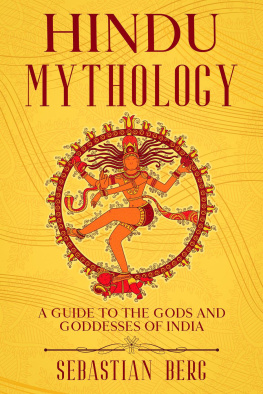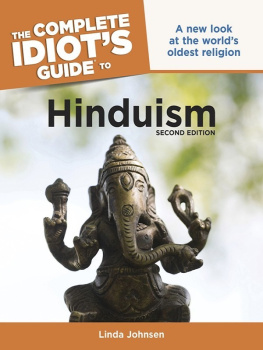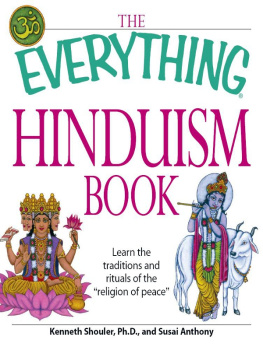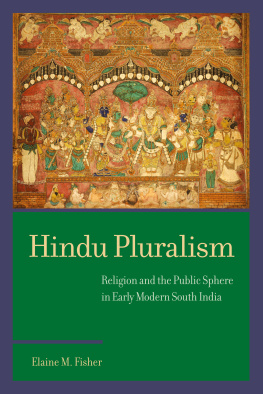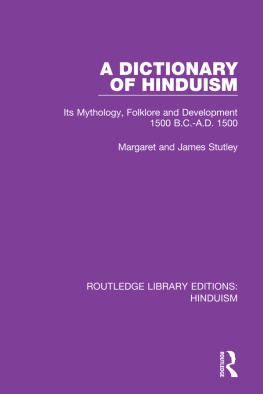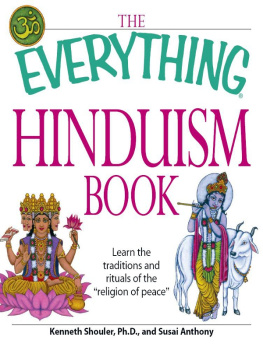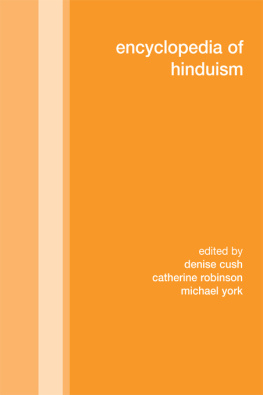Dallapiccola - 2004;2002;
Here you can read online Dallapiccola - 2004;2002; full text of the book (entire story) in english for free. Download pdf and epub, get meaning, cover and reviews about this ebook. City: London, year: 2004;2002;2014, publisher: Thames & Hudson, genre: Religion. Description of the work, (preface) as well as reviews are available. Best literature library LitArk.com created for fans of good reading and offers a wide selection of genres:
Romance novel
Science fiction
Adventure
Detective
Science
History
Home and family
Prose
Art
Politics
Computer
Non-fiction
Religion
Business
Children
Humor
Choose a favorite category and find really read worthwhile books. Enjoy immersion in the world of imagination, feel the emotions of the characters or learn something new for yourself, make an fascinating discovery.

- Book:2004;2002;
- Author:
- Publisher:Thames & Hudson
- Genre:
- Year:2004;2002;2014
- City:London
- Rating:3 / 5
- Favourites:Add to favourites
- Your mark:
- 60
- 1
- 2
- 3
- 4
- 5
2004;2002;: summary, description and annotation
We offer to read an annotation, description, summary or preface (depends on what the author of the book "2004;2002;" wrote himself). If you haven't found the necessary information about the book — write in the comments, we will try to find it.
2004;2002; — read online for free the complete book (whole text) full work
Below is the text of the book, divided by pages. System saving the place of the last page read, allows you to conveniently read the book "2004;2002;" online for free, without having to search again every time where you left off. Put a bookmark, and you can go to the page where you finished reading at any time.
Font size:
Interval:
Bookmark:

The author wishes to express particular thanks
to Professor J. L. Brockington for his valuable
suggestions, to Mr T. R. Blurton for his
continuous encouragement and support,
and to Mr A. Korner for his timely rescue.
To Duncan Shaw and Sushie Abbasciano
Unity in diversity or diversity and continuity are two of the many catchphrases applied to India. Although commonplace, they contain more than a grain of truth. India is so vast roughly the size of Europe from the Atlantic Ocean to the Urals - that each region is a land in its own right, with its particular language, customs, religious and cultural traditions. Yet shared social systems, firmly grounded in religious beliefs, provide the cohesive force that unites over a billion people of very different backgrounds.
The Indian subcontinent is severed from the rest of Asia by the mighty range of the Himalayas, the Abode of Snow, which, according to Hindu mythology, is the dwelling place of the gods. Shaped like an inverted triangle, measuring c. 3,200 kilometres from north to south, and almost the same from east to west, it extends into the Indian Ocean. A variety of physical features determine the different climatic zones, ranging from the inhospitable, windswept terrains of the northernmost parts of the country, to the subtropical, fertile regions of the south.
A number of imposing fluvial systems cross the land. In the northern part of the country flows the Indus (Sindhu), from which India derives its name. From its source in the Himalayas it journeys through an arid desert waste, westwards to the Arabian Sea. Its five tributaries gave the name to the Panjab or five waters region. Also in the Himalayas lie the sources of the two most important sacred rivers of the subcontinent, the Ganges and Jumna (the goddesses Ganga and Yamuna), which flow eastwards, merging at Allahabad (Prayaga) and eventually joining the Brahmaputra. They traverse a vast expanse of flat land and enter the Bay of Bengal in the mighty Ganges delta, an extremely wet and fertile area. Central India, a hilly region, is bounded by the wooded Vindhya hills in the north and by the westward-flowing Tapti and the Narmada in the south. The arid Deccan plateau, characterized by a dramatic landscape of granite and sandstone outcrops, the centre and possibly oldest part of the subcontinent, is skirted both on the east and the west front by a range of forested mountains, known respectively as the Eastern and Western Ghats. The two most relevant rivers of the Deccan are the eastward-flowing Godavari and Krishna, both ending in a fertile delta. In the south the principal river is the Kaveri, the Ganga of the south, which springs from the mountains of Kodagu (Coorg), nestled in the Western Ghats, on the border between the states of Karnataka and Kerala, and flows eastwards for some 785 kilometres, fanning out in a delta along the Coromandel coast. On the shores of the Arabian Sea, the Malabar coast, a narrow strip of land, blessed by abundant rainfall and lush vegetation, is delimited in the east by the Western Ghats. Kanyakumari (Cape Comorin) is the southernmost tip of India, where the Malabar and Coromandel coasts meet.
India has six seasons, the most important being the monsoon, which is expected in the summer months from June to September, and is vital for the survival of the population. An additional, albeit lighter monsoon occurs in the winter months in southern India.
In the course of its long history, the northern part of India was repeatedly overrun by waves of invaders, coming from the north-west. The first identified were the Aryans, who appeared in the middle of the 2nd millennium BCE; they were followed between the 1st century BCE and the 1st century CE by the Shakas, the Parthians and the Kushanas, by the Huns in the 6th century, and finally, by successive waves of Muslims from the 12th century onwards. Among the most important Islamic dynasties to rule India were the Mughals (15261858), world-renowned for their splendid artistic achievements. Cultural, ethnic and religious differences notwithstanding, the invading peoples gradually became integrated.
The local population, belonging to different ethnic groups, was as diverse as the foreign invaders. Most of them were settled along the rivers and in the fertile areas, and were often separated from other groups by arid tracts, hills or forested mountains. Each community developed its own distinctive language, cultural, religious and artistic traditions, some of which still survive.
In modern India, there are eighteen official languages, most of which have their own script. The inhabitants of northern, western, central and eastern India, as well as those inhabiting the northern part of the Deccan, speak languages that evolved from Sanskrit, probably the oldest among the languages of the Indo-Aryan group. Southern India is the home of the Dravidian languages. In 1956, when the British system of provinces was abandoned in favour of the formation of states based on linguistic principles, the languages gave their name to states such as Maharashtra, Bengal, Tamil Nadu, Karnataka. A range of northern Indian languages, spoken from Bihar to Rajasthan, coalesced in the course of the last thousand years to form modern Hindi, the official language of India. The second most important is Urdu, derived from the Turkish word for camp. It is a refined language, strongly influenced by Persian, Arabic and Hindi, which originated in northern India probably during the 13th and 14th centuries. It is mainly used in Islamic cultural and religious milieux. Both Hindi and Urdu have spread all over the subcontinent and serve, along with English, as a common language among Indians. Apart from the official eighteen languages, most of which have a sizeable literary output, there are hundreds of dialects, some of which are spoken by only a small number of people.
As varied as the languages are Indias textile patterns, dress, ornaments and dietary habits. In the same region, these may vary from community to community and, until recently, before the introduction of the ubiquitous jeans, trainers and baseball cap worn by fashion-conscious youths, the pattern - or the absence of it - on a lungi (an ankle-length cloth tightly drawn around the waist) or the way a dhoti was draped, would immediately indicate the native place, caste and religion of the wearer. The same applies to the complex tying of turbans and other styles of headgear. In the last decade or so, young women have discarded the sari of everyday wear, in favour of the salvar-kamiz, loose trousers and a long tunic, and the dupatta, or scarf, thrown over the chest or draped over the head, which was once worn only in the northern part of the country, and generally by Muslim women. The older generation, however, still wears the age-old sari of traditional hues and designs, draped in various ways, proudly proclaiming their background and social status. A determining factor in the choice of fabric colours is the surrounding landscape: in the barren and arid tracts of Kutch and Rajasthan, women wear colourful dresses profusely embroidered with intricate mirror work, while in Kerala, one of the most verdant regions of India, both men and women wear white garments, occasionally set off by a narrow gold border.
As well as dress, dietary habits vary throughout India according to each region. The northern Indian diet is based on wheat products and unleavened bread, while southern India concentrates on rice. Fish plays an important part in the peoples fare in the coastal regions of India such as Bengal, Orissa and Kerala. Each region can boast a vast array of vegetarian and non-vegetarian dishes, as well an innumerable variety of sweets; noteworthy are the culinary specialities of individual communities and particular religious groups.
Font size:
Interval:
Bookmark:
Similar books «2004;2002;»
Look at similar books to 2004;2002;. We have selected literature similar in name and meaning in the hope of providing readers with more options to find new, interesting, not yet read works.
Discussion, reviews of the book 2004;2002; and just readers' own opinions. Leave your comments, write what you think about the work, its meaning or the main characters. Specify what exactly you liked and what you didn't like, and why you think so.

